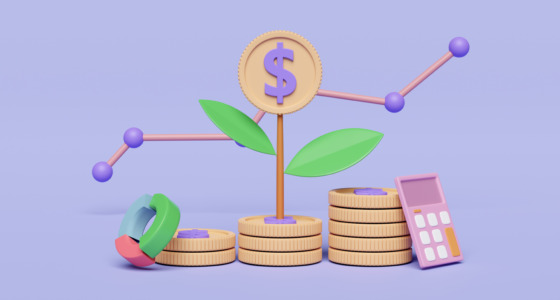Ever wonder where the energy that powers your home comes from? Chances are, at least some of it comes from renewable resources. Renewable resources are sources of energy that can replenish themselves naturally and are sustainable in the long run. Unlike fossil fuels like coal and oil, which take millions of years to form and are being depleted faster than they are produced, renewable resources are constantly being renewed.
The five major types of renewable resources are solar, wind, geothermal, hydro, and biomass. These energy sources generate power through the sun, wind, heat within the earth, flowing rivers, and plant and animal waste. Using more renewable energy is critical to reducing pollution and ensuring enough affordable energy for future generations. Renewable resources may be the key to powering our future in an environmentally friendly and sustainable way.
What Are Renewable Resources?
Renewable resources are natural resources that can replenish themselves over time. Unlike fossil fuels that take millions of years to form and are nonrenewable, renewable resources are practically inexhaustible if used sustainably.
What makes a resource renewable?
For a resource to be considered renewable, it must meet two criteria:
- It must be naturally replenished or regenerated. This means the resource can restore itself at a rate comparable to or faster than the rate at which it is being depleted or consumed. Examples are solar and wind energy, biomass, hydropower, and geothermal energy.
- It must be practically inexhaustible. Although the resource is finite, it is so large that it won’t run out for the foreseeable future if used sustainably. The sun, for example, won’t stop shining in our lifetimes or our children’s children’s lifetimes.
Some of the major types of renewable resources include:
- Solar energy from the sun;
- Wind energy;
- Hydropower from flowing rivers;
- Biomass like wood, biofuels, and biogas;
- Geothermal energy from the earth.
Using renewable resources is environmentally friendly since they produce little to no pollution or greenhouse gas emissions. They are sustainable and help ensure that our natural resources remain for future generations. The more we use renewable resources, the less we depend on nonrenewable resources like coal, oil, and natural gas.
Key Differences Between Renewable and Nonrenewable Resources
The key difference between renewable and nonrenewable resources comes down to one thing: replenishment. Renewable resources can be replenished naturally in a short period of time, while nonrenewable resources take an extremely long time to form and replenish, if at all.
Let’s see how to distinguish between renewable and non-renewable resources. Renewable resources like solar and wind energy are constantly being replenished on a human-time scale. The sun shines, and the wind blows every day, so we can harness them repeatedly for power and energy. Other examples of renewable resources include:
- Water – The cycle continuously replenishes water sources like rivers, lakes, and oceans.
- Biomass – Plants and trees can be regrown and reused as fuel.
- Geothermal – The heat within the Earth is continuously generated and replenished.
Nonrenewable resources, on the other hand, include things like:
- Coal, oil, and natural gas – These fossil fuels take millions of years to form and are being depleted much faster than they can replenish.
- Metals – Minerals and metals like gold, silver, and copper are finite in supply. Once we deplete surface deposits, they become more difficult and expensive to extract.
- Nuclear – Elements like uranium used for nuclear energy are also nonrenewable.
Uranium supplies are limited, even though a little goes a long way.
In summary, the key difference comes down to timescales and replenishment rates. Renewable resources are a sustainable choice as they can meet the needs of current and future generations. Nonrenewable resources must be conserved since they cannot be replenished quickly enough. Both have an important role to play in a balanced energy system.
Types of Renewable Resources
The major types of renewable resources include:
Solar Energy
The sun radiates an enormous amount of energy through solar radiation. We can harness this energy through solar panels and convert it into electricity or heat for our homes and businesses. Solar energy is abundant, sustainable, and environmentally friendly.
Wind Energy
Wind energy uses the kinetic energy of moving air to generate power. Giant wind turbines convert the wind’s motion into electricity. Wind power is a popular and affordable source of renewable energy, though it depends on having consistent wind speeds in a location.
Hydroelectric Energy
Hydroelectric power uses the energy of flowing rivers and streams to generate electricity. Hydroelectric dams and turbines convert the kinetic energy of flowing water into electricity. Hydroelectric power is a major source of renewable energy and produces no direct waste or emissions. However, hydroelectric dams can have significant environmental impacts, like disrupting wildlife habitats and migration patterns.
Geothermal Energy
Geothermal energy uses the heat within the earth to generate power. Geothermal power plants extract hot water or steam from underground reservoirs and use it to spin turbines that generate electricity. Geothermal energy is a promising source of baseload power since it provides constant power 24 hours a day. However, geothermal power is limited to areas with sufficient geothermal activity, like tectonic plate boundaries.
Bioenergy
Bioenergy uses organic matter like plants, agricultural and municipal wastes to generate energy. Biomass materials like wood chips, corn stalks, and biowaste are burned to heat water into steam, which drives turbines to produce electricity. Biofuels like ethanol and biodiesel are made from plant materials and used as transportation fuels. Bioenergy is renewable but may compete with food crops, leading to land use changes.

The Importance of Transitioning to Renewables
Transitioning from nonrenewable energy sources like coal, oil, and natural gas to renewable energy sources is crucial for the long-term sustainability of our planet. As nonrenewable resources are depleted, the cost and environmental impact of extracting them increases. In contrast, most renewable energy sources are abundant and free.
Sustainable and Environmentally-Friendly
Renewable energy sources like solar and wind are sustainable – they are continuously replenished and will never run out. They are also better for the environment since they produce little greenhouse gas emissions or pollution. In comparison, burning fossil fuels releases carbon dioxide and other pollutants that contribute to climate change and negatively impact human health.
Energy Security
Countries can gain energy independence and security by using domestic renewable energy sources. They no longer rely on importing oil, coal, and natural gas from other countries. This also makes energy prices more stable and predictable, unaffected by events in other parts of the world.
Job Creation
The renewable energy industry is creating many new jobs in manufacturing, construction, and other fields. These green jobs tend to be local, creating employment opportunities for people in the communities where renewable energy projects are built.
Cost Competitive
Although renewable energy systems require a large initial investment, the “fuel” they use – sunlight, wind, water – is free. So once installed, the cost of generating power is very low. As technology improves and adoption increases, the costs of renewables continue to decline substantially. Many forms of renewable energy are already cost-competitive with fossil fuels.
Transitioning to renewable energy is a smart strategy for governments and businesses. By embracing sustainable and environmentally friendly sources like solar and wind, we can meet the world’s energy needs while combating climate change and reducing pollution. The future is renewables.
The Meaning of Renewables in Simple Terms
The meaning of renewable resources in Hindi is the same as in other languages. When discussing renewable resources, it basically means natural resources that can replenish themselves over time. Unlike fossil fuels, which take millions of years to form and are nonrenewable, renewables are constantly being produced as part of the natural cycle. Some examples of renewable resources are:
Solar Energy
The sun radiates enormous energy that can be harnessed using solar panels to generate electricity or heat water. The sun rises daily, so solar energy is constantly produced and renewed.
Wind Energy
As long as the wind blows, wind energy will be produced. Giant wind turbines can capture the wind to generate electricity that powers our homes and businesses.
Geothermal Energy
Geothermal energy taps into the heat within the earth to produce electricity or provide heating. Ground source heat pumps can tap into shallow geothermal energy to heat and cool buildings efficiently.
Biomass
Plant and animal materials like wood, crops, manure, and biofuels can be used to produce renewable energy through combustion or convert it into biofuels like ethanol or biodiesel. As long as we have plants and organic waste, biomass energy will be produced.
Hydropower
The rivers and streams’ natural flow and elevation drop can be harnessed to spin turbines and generate hydroelectric power. Although droughts can temporarily reduce production, hydropower is renewed by the water cycle and rainfall.
In summary, renewable resources utilize natural processes that are continuously replenished. By tapping into the sun, wind, ground, plants, and water, we have access to clean sources of energy and fuels that are endlessly renewed. Our planet provides these resources, so the meaning of renewables is really about sustainability – using what we need today to ensure supply for future generations.
Conclusion
So, that covers the basics of renewable resources and why they matter. Also, distinguish between renewable and nonrenewable resources. As you’ve seen, renewable resources are sustainable energy sources and raw materials that can be naturally replenished or limitless. Unlike fossil fuels and other nonrenewable resources that deplete over time, renewable resources are better for the environment and help ensure that we have the energy and materials we need for current and future generations.
While renewable resources may require initial investments, the long-term benefits to our planet are huge. So next time you flip on a light switch or turn the key in your vehicle’s ignition, consider the source of that energy and whether it’s renewable or not. Every step we take towards a greener future powered by renewable resources helps create a more sustainable world for us all. Think globally, act locally, as the saying goes – even small changes can make a big difference. Our planet will thank you for it.










